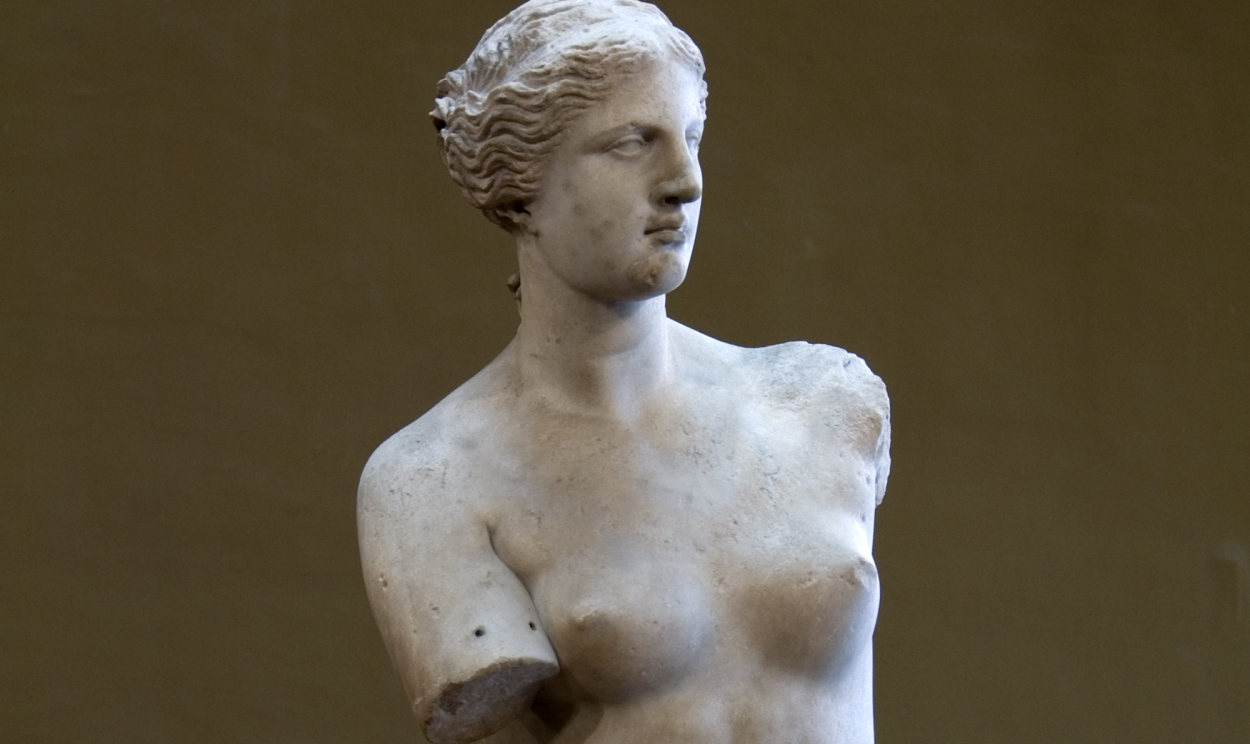The Venus de Milo stands as a symbol of classical beauty, captivating hearts and minds since its discovery in 1820. Unearthed on the serene island of Melos, part of the Cyclades archipelago in Greece, this iconic statue has woven itself into the fabric of art, culture, and philosophy. Crafted by the esteemed sculptor Alexandros of Antioch, the Venus de Milo transcends mere artistry to become a vibrant reflection of Hellenistic ideals, encapsulating the harmony and balance revered in ancient aesthetics. Despite its missing arms, it continues to bewitch audiences, inviting contemplation of beauty, femininity, and the cultural narratives that have shaped our understanding of art throughout centuries.
The Historical Context of Venus de Milo
The Venus de Milo emerges from a rich historical tapestry that intertwines art, culture, and society’s evolving perceptions of beauty. To comprehend its significance fully, one must delve into the socio-political landscape of the time when it was created.
The Hellenistic Era: A Period of Transformation
Spanning from the death of Alexander the Great to the rise of Roman dominion, the Hellenistic era marked a pivotal shift in artistic expression. It was a time characterized by increased interaction between cultures, leading to a blending of artistic styles and philosophical thought.
The Venus de Milo, crafted during this period, embodies the ideals of beauty and proportion that were central to Hellenistic art. Unlike the earlier classical works that predominantly focused on male figures and athleticism, this statue places female beauty at the forefront, highlighting both grace and sensuality.
Artists began to explore a more naturalistic representation of the human form, breaking away from rigid standards. This evolution reflected broader societal changes, where personal expression and emotional depth became increasingly valued.
The Symbolism of Venus: Love and Beauty
As the goddess of love and beauty, Venus represents not only physical allure but also the deeper complexities of human relationships and emotions. The Venus de Milo captures this duality, serving as a reminder that beauty is multifaceted and deeply intertwined with the human experience.
Art historians and scholars have long debated the significance of Venus’ nudity and posture. Some suggest that her pose suggests modesty despite her lack of clothing, while others argue that it invites the viewer to engage with their own perceptions of desire and admiration. The statue thus becomes a canvas for personal interpretation, allowing each observer to project their feelings and experiences onto it.
The Archaeological Discovery: Unlocking the Past
When the Venus de Milo was discovered by a farmer in 1820, it was initially met with intrigue and excitement. However, its unveiling also sparked a larger discourse about the preservation of cultural heritage, especially within the context of ongoing colonial explorations.
This discovery marked a turning point for Greek antiquities, as Europe’s fascination with classical art surged during the Romantic period. The statue, with its exquisite craftsmanship and enigmatic aura, became an emblem of the era’s obsession with the past. However, it also raised questions about ownership, authenticity, and cultural identity—issues that continue to resonate today as we navigate the complex legacies of colonialism in art history.
The Aesthetic Appeal of Venus de Milo
The aesthetic qualities of the Venus de Milo are a testament to the skill of its creator and the ideals of its time. Its contours, proportions, and the softness of the marble invite endless admiration and analysis.
The Artistic Technique: Mastery in Marble

Crafted from exquisite Parian marble, the Venus de Milo exemplifies extraordinary craftsmanship. The statue’s smooth finish and lifelike details reflect the artist’s meticulous attention to form and texture.
The drapery of the garment clinging to her body adds a dynamic element, creating the illusion of movement. This technique not only showcases the artist’s technical prowess but also serves to enhance the goddess’s ethereal beauty. The way light interacts with the marble further enhances its appeal, as shadows dance across its surface, breathing life into the stone.
Furthermore, the missing arms invoke curiosity and speculation. While some may lament their absence, others argue that this imperfection adds to the statue’s intrigue, prompting viewers to engage more deeply with its elegance and mystery.
The Timelessness of Beauty
One of the most compelling aspects of the Venus de Milo is its timeless quality. Though it originates from a specific period in history, its beauty resonates across generations, transcending cultural and temporal boundaries.
In contemporary society, beauty standards continuously evolve, influenced by various factors such as fashion trends, social media, and cultural shifts. Yet, the enduring allure of the Venus de Milo reminds us that certain aesthetic principles remain constant. Her graceful proportions and serene expression serve as a touchstone for discussions surrounding beauty, inspiring dialogues that reflect both admiration and critique of prevailing ideals.
Feminine Identity and Empowerment
The Venus de Milo also provides a unique lens through which to explore concepts of femininity and empowerment. As a celebrated representation of female beauty, she challenges contemporary notions of how women should be perceived and portrayed in art.
Historically, women’s bodies have often been objectified or restricted within artistic domains. In contrast, the Venus de Milo celebrates the female form, inviting viewers to appreciate its complexity and strength. This offers a powerful commentary on self-acceptance and body positivity, positioning Venus as a figure of empowerment rather than mere objectification.
Moreover, as modern feminism encourages diverse representations of women, the Venus de Milo stands as a reminder of the importance of reclaiming and redefining beauty narratives. Her legacy inspires future generations to embrace their uniqueness, asserting that beauty exists in myriad forms, unconfined by societal expectations.
The Cultural Impact of Venus de Milo

Since its discovery, the Venus de Milo has left an indelible mark on art, literature, and popular culture. Its influence extends far beyond the confines of museums and galleries, shaping perceptions of beauty and femininity across the globe.
Venus in Art: Inspirations and Interpretations
The Venus de Milo has inspired countless artists, writers, and thinkers throughout history. From painters to sculptors, its elegance has ignited creativity and exploration of themes related to beauty, love, and the human condition.
Many renowned artists, including Jean-Auguste-Dominique Ingres and Pablo Picasso, have drawn upon the ideals encapsulated in the Venus de Milo, reinterpreting its essence through their unique lenses. Through modern adaptations, they challenge traditional notions of beauty while paying homage to the original piece.
The statue has also found its place in contemporary installations and exhibitions, where it becomes part of conversations about gender roles, representation, and artistic freedom. These reinterpretations not only celebrate the Venus de Milo as a work of art but also encourage critical engagement with its cultural significance.
Literary Echoes: Venus in Words
In literature, the Venus de Milo has become a symbol of unattainable beauty, love, and longing. Poets, playwrights, and novelists have referenced this iconic statue to evoke themes of desire and idealization.
Notably, writers like Oscar Wilde and John Keats have explored the interplay between beauty and mortality, drawing parallels between the physical allure of the Venus de Milo and the fleeting nature of existence. Such literary echoes serve to enrich our understanding of the statue, reinforcing its status as a timeless muse.
Contemporary Popular Culture
In the realm of popular culture, the Venus de Milo continues to capture the public imagination. References can be found in films, advertisements, and even music, showcasing its enduring relevance in a rapidly changing world.
For instance, fashion designers often draw inspiration from the statue’s graceful lines and contours, incorporating its aesthetic into contemporary collections. Similarly, film directors utilize its imagery to evoke themes of love, beauty, and nostalgia in cinematic narratives.
Moreover, the statue’s iconic status allows it to transcend national and cultural boundaries, appealing to audiences around the world. This universality speaks to the human spirit’s innate appreciation for beauty, connecting people across different backgrounds through shared admiration for the Venus de Milo.
The Legacy of Venus de Milo

As we reflect on the complexities surrounding the Venus de Milo, it becomes evident that its legacy extends far beyond its physical form. This masterpiece intersects with numerous themes, from historical context to the evolving concept of beauty and femininity.
Preservation and Cultural Heritage
The journey of the Venus de Milo from the shores of Melos to the Louvre Museum in Paris highlights the importance of preserving cultural heritage. Its discovery initiated important discussions regarding archaeological ethics, ownership, and the responsibilities of museums to safeguard and respect cultural artifacts.
Today, the Venus de Milo serves not only as a work of art but as a reminder of the fragility of cultural heritage in a globalized world. As society grapples with issues surrounding repatriation and ownership, the statue’s story underscores the need for dialogue and understanding regarding the preservation of cultural treasures.
Conversations Around Beauty Standards
The Venus de Milo invites continuous exploration of beauty standards across cultures and eras. As we witness shifting paradigms in how beauty is defined and represented, we are prompted to question the implications of these changes for self-image and identity.
In contemporary discussions of body positivity and inclusivity, the Venus de Milo emerges as a pivotal reference point. By celebrating diverse forms of beauty, we can foster an environment where individuals feel empowered to embrace their unique characteristics, challenging narrow definitions of attractiveness.
Art as a Reflection of Society
Ultimately, the Venus de Milo serves as a mirror reflecting societal values and aspirations throughout history. Its existence and ongoing relevance prompt us to consider how art influences and shapes our understanding of ourselves and the world around us.
By examining the journeys of the Venus de Milo, we gain insight into the cultural narratives that have persisted over time. The statue’s ability to evoke emotion, provoke thought, and inspire creativity speaks to the transformative power of art—a force that transcends boundaries, uniting humanity in its quest for beauty and meaning.
Conclusion

The Venus de Milo stands as a timeless symbol of beauty, femininity, and cultural significance. From its origins in ancient Greece to its profound impact on modern art and society, this iconic statue has captivated hearts and minds for centuries. It prompts us to explore our perceptions of beauty, embrace diversity, and engage with the complex narratives woven into the fabric of our cultural heritage. As we continue to navigate the intricacies of identity and representation, the Venus de Milo remains a guiding light, illuminating the enduring quest for understanding and appreciation of the human experience.
✉️ Stay Connected — Subscribe for Weekly Updates
Discover timeless stories, practical wisdom, and beautiful culture — delivered straight to your inbox.
*We only share valuable insights — no spam, ever.







tlover tonet
Tháng mười một 11, 2024Great tremendous things here. I am very satisfied to look your post. Thank you so much and i’m having a look ahead to touch you. Will you kindly drop me a mail?
John Son
Tháng mười một 11, 2024thank you, you can contact me via
Facebook: https://www.facebook.com/blog.traditionalculture/
or my personal mail: ducmikooo@gmail.com
Carson Duthie
Tháng mười một 11, 2024Pretty! This was a really wonderful post. Thank you for your provided information.
Live American Football Schedule
Tháng mười một 11, 2024Hi, i feel that i saw you visited my weblog so i got here to “return the want”.I am trying to find things to improve my web site!I assume its ok to use some of your ideas!!
droversointeru
Tháng mười một 11, 2024I have not checked in here for a while because I thought it was getting boring, but the last several posts are good quality so I guess I’ll add you back to my daily bloglist. You deserve it my friend 🙂
drover sointeru
Tháng mười một 11, 2024Good ?V I should certainly pronounce, impressed with your web site. I had no trouble navigating through all the tabs as well as related info ended up being truly easy to do to access. I recently found what I hoped for before you know it in the least. Reasonably unusual. Is likely to appreciate it for those who add forums or anything, web site theme . a tones way for your customer to communicate. Excellent task..
Honey Trick for Memory Loss
Tháng mười một 11, 2024Respect to post author, some fantastic entropy.